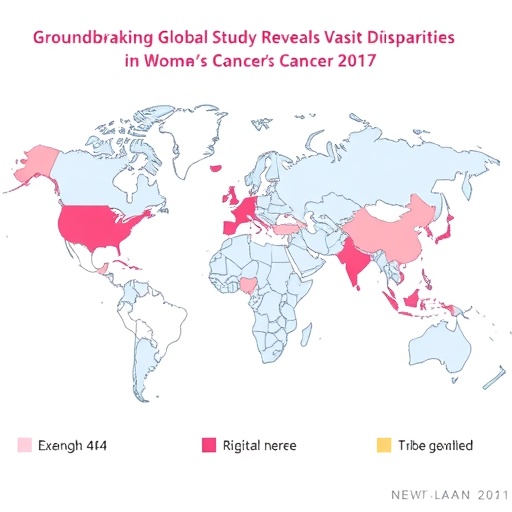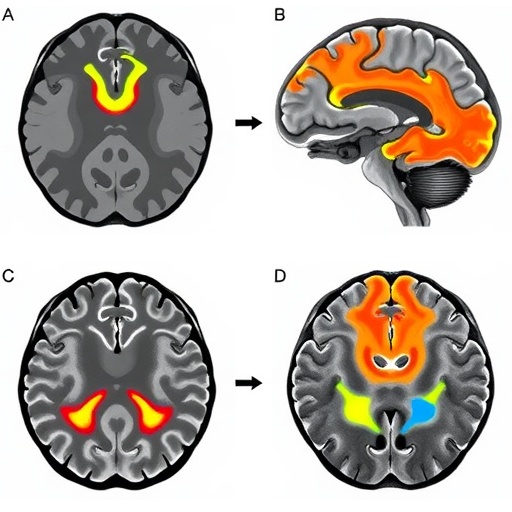A groundbreaking international study has unveiled stark disparities in breast, cervical, and ovarian cancer diagnosis and treatment worldwide, highlighting persistent global inequalities in women’s cancer care. Drawing on data from over 275,000 women diagnosed between 2015 and 2018 across 39 countries, this comprehensive research offers the most detailed global insight to date into how these prevalent cancers are detected and managed, and how clinical practices align—or fail to align—with internationally accepted guidelines.
The analysis reveals a troubling divide in early-stage cancer detection rates between high-income countries (HICs) and low- and middle-income countries (LMICs). For breast and cervical cancers, roughly 40% of women in wealthier nations were diagnosed at an early stage, while this figure falls below 20% in poorer regions. Notably, ovarian cancer emerges as the cancer least likely to be caught early, with fewer than one in five cases detected at an early phase globally. This disparity underscores not only diagnostic challenges but also the broader barriers to timely healthcare access in less resourced settings.
One key driver of survival outcomes is the stage at which cancer is detected. Metastatic breast cancers, where malignant cells have spread beyond the primary site, account for under 10% of cases in most high-income contexts, but can reach upwards of 44% in some LMICs. Advanced cervical cancer rates show similarly concerning variations, though generally remain beneath 15% worldwide. Ovarian cancers, often dubbed the “silent killer” due to nonspecific symptoms such as abdominal pain and swelling, frequently evade early detection, with diagnoses skewed heavily towards advanced stages across all countries.
Treatment modalities and their adherence to clinical guidelines also vary widely. Surgery, a cornerstone of cancer management, is offered to 78% of women with early-stage disease in HICs, compared to just 56% in LMICs. However, the choice and appropriateness of surgical interventions reveal a complex global mosaic. For example, breast-conserving surgery followed by radiotherapy—the guideline-recommended approach for early-stage breast cancer—is practiced in 67-78% of cases in most European countries, but see lower rates in North America. In contrast, mastectomy remains common not only in LMICs but also in countries like the United States and Canada, reflecting multifaceted factors including patient preference, healthcare infrastructure, and insurance coverage.
The domination of mastectomy in LMICs is primarily attributed to limited availability of radiotherapy and scarcity of surgeons specializing in breast conservation techniques. Beyond technical constraints, socioeconomic determinants such as health literacy, distance from treatment centers, and cultural perceptions critically influence treatment decisions. In Thailand, for instance, older women often choose mastectomy driven by beliefs about its superior curative potential, whereas in parts of the United States, insurance policies may restrict access to radiotherapy, disproportionately affecting economically disadvantaged patients.
This study was conducted under the VENUSCANCER project, nested within the larger CONCORD programme which monitors global cancer survival. It harnesses population-based cancer registries—data repositories essential to understanding epidemiologic and treatment patterns at scale. The authors emphasize the irreplaceable role of these registries in benchmarking clinical care and guiding public health policies, urging sustainable governmental investment in maintaining and expanding such data infrastructure, especially in LMICs where data completeness often lags.
Another significant insight from the study is the relationship between patient age and treatment adherence to guidelines. Both in high- and low-income settings, older women were less frequently offered treatments aligned with established protocols compared to their younger counterparts. This discrepancy highlights an urgent need for individualized care approaches that transcend ageist biases and consider physiological as well as social contexts to optimize outcomes.
Importantly, non-surgical interventions such as chemotherapy and hormone therapies demonstrated higher adherence to clinical guidelines than surgery in many countries. This suggests that systemic treatments may be more uniformly accessible or standardized globally, although this doesn’t diminish the critical need to expand surgical capacity and expertise. Radiotherapy facilities, in particular, are acutely lacking in many LMICs, further complicating efforts to offer comprehensive, guideline-consistent treatment.
Lead researcher Professor Claudia Allemani from the London School of Hygiene & Tropical Medicine underscores that while early-stage detection combined with prompt access to optimal treatment is increasingly attainable, especially in wealthier nations, the persisting low rates of early diagnosis in LMICs severely limit survival improvements. She advocates for intensified global policy actions, including expanded cancer screening programs, investment in healthcare infrastructure, and tailored clinical guidelines that reflect local realities and resource constraints.
Moreover, Dr. Veronica Di Carlo highlights the imperative of adapting international recommendations to diverse healthcare environments. Simplification and translation of clinical guidelines into local languages, coupled with educational initiatives for healthcare providers and patients alike, could significantly enhance guideline implementation worldwide. Ensuring women have informed agency in treatment decisions not only improves adherence but also respects individual values and cultural contexts.
While the study represents a monumental step forward, authors acknowledge limitations such as incomplete data from certain countries, which may affect generalizability of findings. Nonetheless, the wealth of evidence produced sets a new benchmark for understanding global cancer care pathways and illuminates critical avenues for intervention.
The implications of these revelations are profound. With cancer representing a leading cause of death among women globally, bridging the gaps in early detection and treatment consistency is an urgent public health priority. Enhanced funding for population-based cancer registries, expanded radiotherapy infrastructure, increased training for specialized surgeons, and reforms in health insurance coverage collectively form the pillars on which global oncology equity must be built.
This monumental study, published in The Lancet, is poised to inform and energize initiatives such as the World Health Organization’s Global Breast Cancer Initiative and Cervical Cancer Elimination Initiative. Its findings advocate for a concerted, multifaceted approach to cancer control that transcends economic divides, ensuring that all women, regardless of geography or income, receive high-quality, timely, and guideline-consistent cancer care.
Subject of Research: Global disparities in diagnosis, treatment, and guideline adherence for breast, cervical, and ovarian cancers in women.
Article Title: Global variation in patterns of care and time to initial treatment for breast, cervical, and ovarian cancer from 2015 to 2018 (VENUSCANCER): a secondary analysis of individual records for 275,792 women from 103 population-based cancer registries in 39 countries and territories.
News Publication Date: 22-Oct-2025
Web References:
VENUSCANCER Project: https://cordis.europa.eu/project/id/772345
CONCORD Programme: https://csg.lshtm.ac.uk/research/themes/concord-programme/
DOI Link: http://dx.doi.org/10.1016/S0140-6736(25)01383-2
References: Study published in The Lancet, 2025.
Keywords: Health and medicine, Cancer, Epidemiology, Cervical cancer, Breast cancer, Ovarian cancer
Tags: breast cancer early detection ratescervical cancer treatment gapsglobal cancer diagnosis inequalitiesglobal cancer research findingshealthcare access in low-resource settingshigh-income vs low-income cancer careinternational cancer treatment guidelinesmetastatic cancer survival ratesovarian cancer diagnosis challengeswomen’s cancer care disparitieswomen’s health disparities worldwideWomen’s Health Equity





